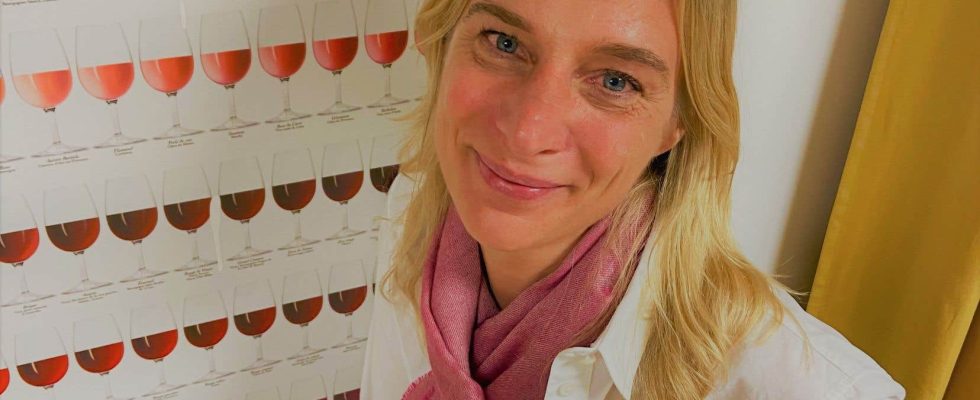We drink a sip of wine and there it slips in the mouth too often without our knowledge, by distraction or under the influence of a conversation which finds in it the ideal lubricant to avoid drying up the source. The wine travels in a way in a restricted space, but endowed with numerous specialized receptors, by the elementary flavors and other tactile and thermal parameters which provide an image of it at the limit of gustatory holography. Either the wine flies like a letter in the post or it strips, tears, dries and scales what you have left of your dentures. In short, there is no need to specify that, like you, I prefer, in terms of buco-sensory experience, this Invitation to travel of Charles Baudelaire who argues that “there, everything is order and beauty, luxury, calm and voluptuousness”.
These tannin polishers
The gruff, atramentary and downright off-putting wines of a not-so-distant era when the smallest bottle of red required at least 10 years of cellaring to soften the rind are now over. Understanding these famous tannins — whether they come from grapes or wood — is essential to enjoy a red wine with a minimum of decorum and civility. It is already necessary, at the start, to go to the source, to the heart of the pips of the grape berry, to the very stalk of the bunch as well as to a perfect physiological maturity of the whole in the vineyard to put all the chances of its coast. A challenge brilliantly taken up by oenologists Ericka Laffitte and Barbara Widmer, both of whom we met recently.
Ericka Laffitte, at Château Laffitte-Teston, in the French Southwest. You already know who you are dealing with when you face the tannat, 80% mandatory in the Madiran appellation. At the Laffitte, this black grape variety rich in polyphenols is planted here at 95%. That is to say the interest, for Ericka and her brother Joris, of capturing all the essence to smoothen the angles. The father had indeed used the service of the inventor Patrick Ducournau and his technique of microbubbling consisting in polymerizing the tannins of musts rich in polyphenols in the early 1990s, only to realize, later, that the wines tended to dry up. The 4e generation will hasten to rectify the situation, certainly by vinifying powerful reds, but dressed in fresh tannins and soft texture, including this cuvée Old Vines 2018 ($23.90 – 747816) 100% tannat, vibrant with freshness, dense without being heavy, with wonderfully integrated soft tannins (5) ★★★. Follow to “clear” your palate with this Pacherenc du Vic-Bilh Sec Cuvée Ericka ($22.60 – 11154582, to come (5) ★★★), where the petit mansengs (here at 70%) waltz with vivacity and clarity, not to mention those flavors likely to accompany any Asian cuisine.
Barbara Widmer, at the Tenuta Brancaia, in Tuscany. If Switzerland is not bad, Tuscany, where his parents, Brigitte and Bruno, settled in 1980, even on an abandoned property, is not quite hell either. What a long way to go, but above all what temerity that of Bruno, an advertiser in another life (hence the originality of the labels), to have mainly replanted three vineyards totaling 80 hectares today, including 40 in Maremma only.
Could Barbara have dreamed of anything better, imposing herself in the cellar as well as in the vineyard at the turn of the millennium? Demanding and conscientious, the lady quickly gets to grips with the personality of the different clones of Sangioveses planted near Radda and Castellina, but also of the Cabernets, Merlots, Petits Verdots and Sangioveses confined further south, in a Maremma which ensures here perfect balances in terms of maturity. Let’s avoid clichés, but let’s advance all the same that the cuvées are calibrated, with a Swiss precision here, especially in terms of wood, whose patina “educates” wonderfully these grape varieties, here very generous on the tannic level.
The different cuvées (organic since 2019) bear witness to this. With this Tre 2020 ($23.80 – 10503963), blend of three estates with a dominant Sangiovese here, the whole house philosophy is there. The suppleness of the fruitiness plays with the balance on a slightly understated and well-defined whole. A naughty red with polished tannins under its supple and festive varnish (5) ★★★. On the Maremma side, this Brancaia Noh 2 demonstrates, in the vintage 2020 ($27.95 – 74475445), which is what a pure Cabernet Sauvignon is capable of, rich in dry extracts, but with an exemplary softness on the tannic level, without ever weakening for lack of freshness. Masterful of Precision, once again (5) © ★★★1/2. Conversely, with 80% Merlot (Radda) this time, the It Blu 2019 ($101.75 – 12129469) sets the table for big nights. A real fruity ball of black velvet, both compact and rich, energized by Cabernets from the Castellina vineyard to caress your palate for a long time, deeply (5+) © ★★★★. Naughty, Barbara Widmer? She knows how to brick her tannins, in any case!
